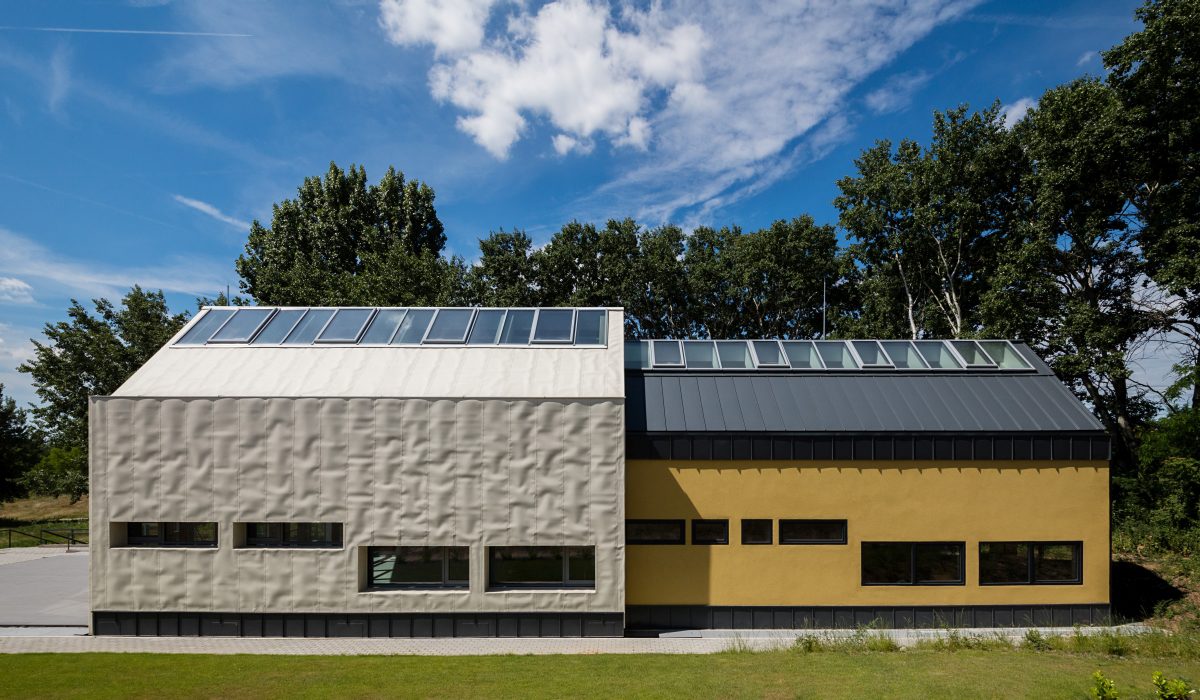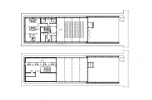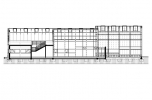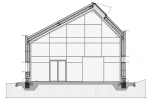An Optimized Shape-Transformer
Energy House, Paks
Architect: ifj. István Kistelegdi
Text: Dávid Bán
Photos: Tamás Bujnovszky
István Kistelegdi implemented his third energy design building in Paks. Much in the same way as with the previous two designs, with this project he made yet another attempt to find an experimental response to a certain problem: how can a mass form be created by using variants? The building now realized can be changed easily according to the quantity of energy required each season. This is where the amazing capacity of this highly variable system originates from. Kistelegdi started to experiment on the climatic and energetic simulation of eco-efficient buildings after drawing inspiration from works by architect Thomas Herzog based in Munich who focused on climatic conditions and related energy-utilization as well as by engineer Gerhard Hausladen. During the design stage of the project he usually makes complex simulations whilst taking into consideration such factors as geometry, orientation, the creation of mass forms, materials, glazing proportions, thermal and air flows, in which time also plays a key role. As all these required a new methodology of design, Kistelegdi created the energy design. The design process accompanied by simulations then results in a roadmap which helps us to get to the building. After making several versions of this scheme and their simulations the unique concept of the sliding house was outlined. The foundation is formed by an adobe house with a floor area of appr. 100 square metres with a gallery where the permanent functions of the building are housed such as the permanent exhibition, office rooms, and their auxiliaries. Beside them the temporary spaces have found their places in a glazed wing with the same size floor area. Above them there is a movable shell structure closely following the shape of the house which may be shifted to meet requirements. Kistelegdi has created yet another complex prototype with Spring Point Energy House which is a model about sustainability and energy-efficiency in its every single component even though it appears a light and airy structure.
Leading architect: ifj. Prof. Dr. István Kistelegdi DLA, PhD – Kistelegdi 2008 Kft.
Fellow architect: Bálint Baranyai PhD
Structure: Zsolt Sándor – M Mérnöki Iroda
HVAC: Szabolcs Vígh – Pincestúdió Kft.
Electrical engineering: ifj. Gyula Sass – Akvila-S Kft.
Public utilities: Ernő Dittrich – Hidroconsulting Kft.
Roads: István Molnár – Viaprodukt Kft.
Investor: Aktív Energia Egyesület








